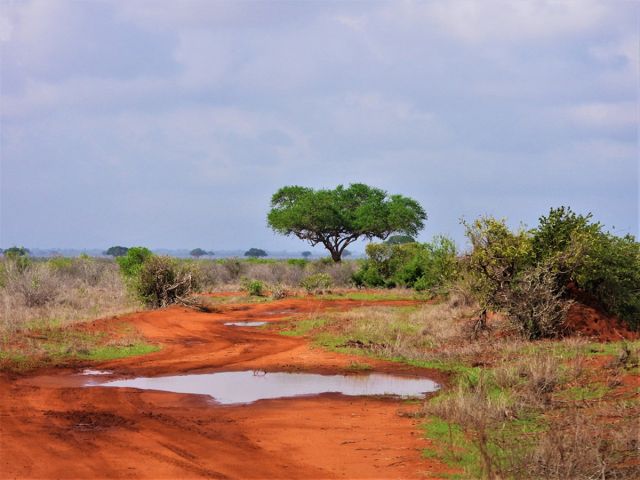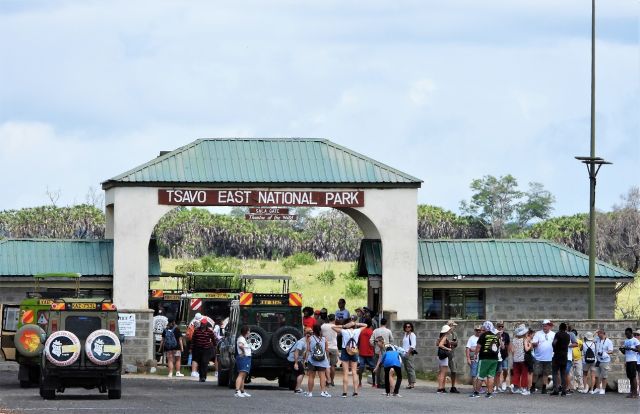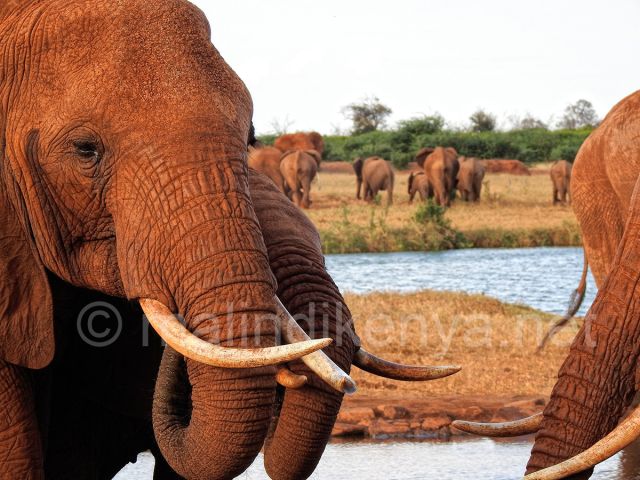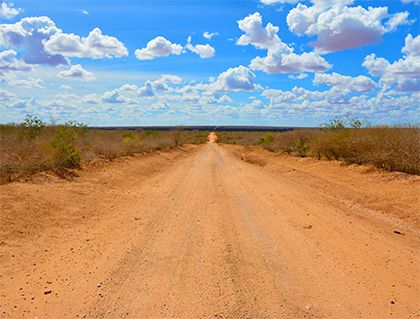
WILDLIFE
15-01-2023 by Giovanna Grampa

A few meters from the edge of a red earth road in Tsavo Park, a young impala has been giving birth to her cub for less than an hour, in the shade of an acacia tree in the undulating bushy savanna. It is a sight that surprises the heart and gives us a feeling of extraordinary privilege: watching the first steps of a newborn creature looking theatrical like a puppet hanging from invisible strings. It does not yet have the strength to hold on to its long, thin legs that look like crystal, ready to snap at the slightest effort, and yet, with a stubborn determination the puppy tries to stand up. First he points his front paws, only to fall back soon after, then he tries his hind legs: and there's the miracle! He stumbles a little and all wobbly, with a great effort to regain his self-mastery, he stands up and begins to take his first steps on those uncertain and unsteady paws, after about seven months spent in his mother's womb.
He has a rangy little face still covered with fragments of placenta and on his body a thick fur a few inches long, dark brown, all wet with amniotic fluid.
The mother sniffs it gently and begins to lick it at a frantic pace to eliminate odors likely to attract predators that are always lurking. But the cub wants to taste the savannah air, eager for the new life that awaits it. It seems to dance as it tries to pull away from its mother, who immediately draws it to herself to continue licking it with insistence and an apparent calmness that conceals only a state of controlled alarm. The creature then scrambles in search of its mother's udders: the task is by no means easy. At first it passes under its mother's belly and nibbles at everything it comes in contact with, starting with its front paws, but is directed by its mother's snout to reverse position and with a dancer's turn, after several unsuccessful attempts, finally finds itself on the right side. With effort, stretching his neck as far as he can, slightly bent over on his front paws, he manages to reach a nipple which he clutches greedily and begins his first meal as a newborn, still swinging on unsure paws, but satisfied with his first conquest. The muzzle is now decidedly more relaxed and begins to take on the endearing, cuddly look that characterizes all newborn puppies.
The choice of the place where the impala has decided to give birth is unusual, to say the least: near a road where, especially at this time, many jeeps of tourists and private cars pass by, under an acacia tree surrounded by dry bushes where it is certainly not easy for a puppy to take its first steps. But it seems to be a studied choice because the area thus offers safe havens to best protect the unborn since baby impalas are tempting to many predators. If a jackal or baboon approaches the baby, the mother may try vigorously to drive them away but is helpless in the face of a hyena or cheetah. And it is for this reason that, immediately after giving birth, the impala rushes to ingest the placenta so as not to leave behind traces that would attract predators to the born young. Then, once it has thoroughly cleaned all the fur, it will move the pup a few feet, well hidden in the grass, nursing it several times a day until it is grown enough to rejoin the herd after a few weeks. By that time it will also have lost its brown fur and will be a photocopy of its mother with a beautiful reddish-gold color coat, only a little lighter, and will be suckled for between four and six months within the herd, protected by all the females. Males, on the other hand, are not at all concerned with defending their offspring, too busy controlling their harem and chasing away any intruders ready to destabilize their territorial dominance.
The savannah, over the years, has given us countless extraordinary emotions, experienced with intense passion, and all have left an indelible mark but, the excitement felt in front of a new life that has just been born, has made us savor the intensity of that present so alive and special. Thus the stories are enriched one season after another as the in-depth knowledge of nature's charms in a land rich in beauty and unexpected, throbbing emotions. The Tsavo returns to life to bestow its fullest splendor: new cubs, new lives enrich the nature now so fertile as to bestow food and water for all, creating optimal conditions for mating and future births.
REPORTAGE
by Freddie del Curatolo

A walk among the herbivores that are usually found in the boundless and dangerous savannah or...
TSAVO'S FRIENDS
by Giovanna Grampa

It had been a difficult few months, but finally the savannah awoke from a long deep sleep that had...
SAFARI
by Giovanna Grampa

Will it be this a record season in terms of safaris in the park of Tsavo?
Judging ...
EVENTS
by redazione

A promotion of three months to live all the excitement of the savannah, from Malindi, Watamu and Mambrui.
The idea of ​​Malindikenya.net which is part of our initiatives to boost tourism, has found the happy Osteria Swara Camp partnership, which...
TRAVELS
by Leni Frau

Tsavo National Park has been listed by the prestigious US newspaper New York Times as one of the...
INITIATIVES
by redazione

The initiative to Malindikenya.net and Swara Osteria Camp "Live with us the magic Savana" is already a great success.
(Read here the initiative and conditions).
The two-day program that provides transfer to Land Cruiser safari to Tsavo East, walk along...
NEWS
by redazione

The sadness is deep for fans of the savannah that after so many safari, had learned to recognize it.
Satao II, one of the few remaining elephants by the giant tusks in Kenya, the "big tuskers" (estimated there would be no...